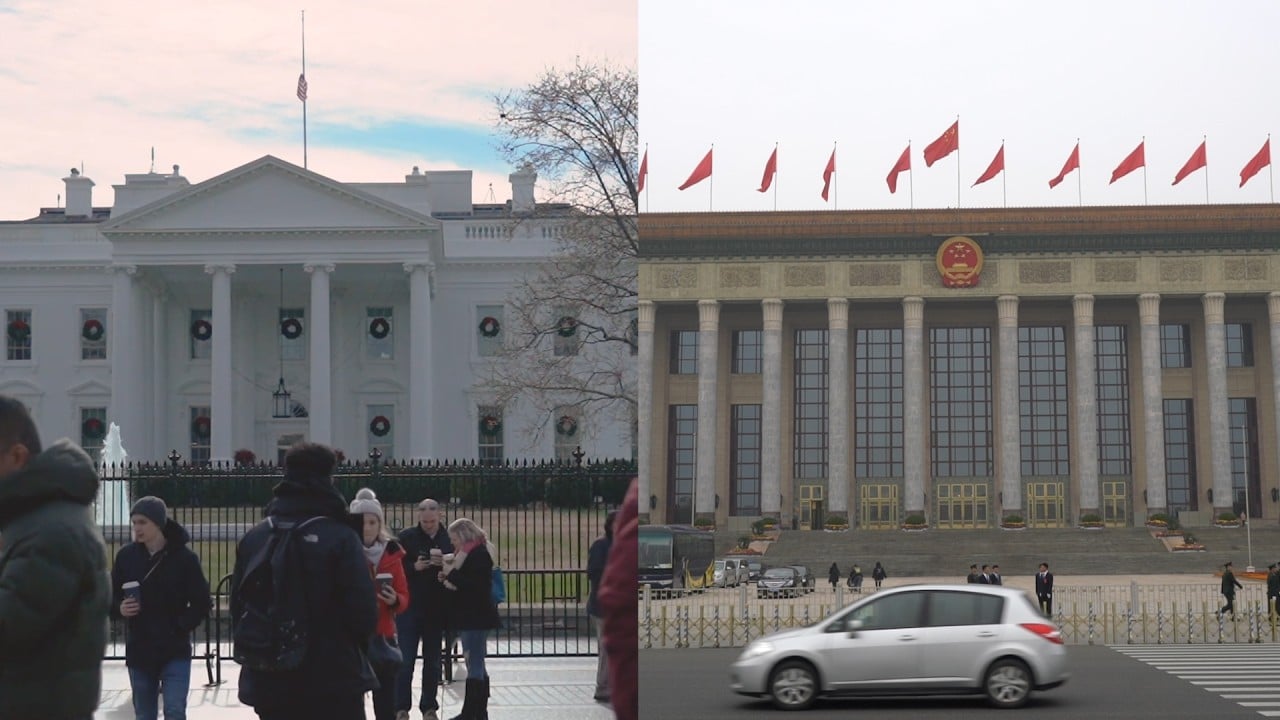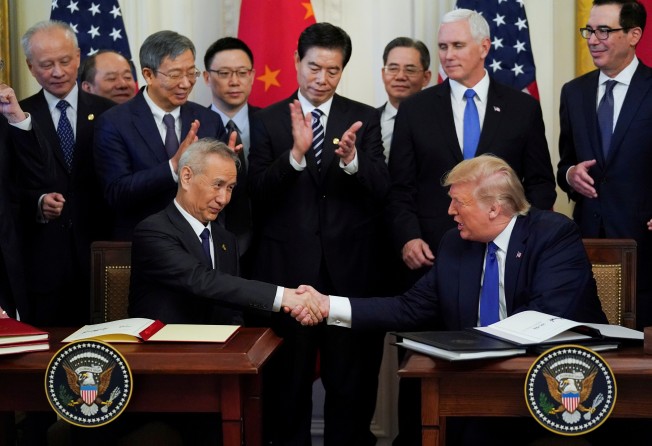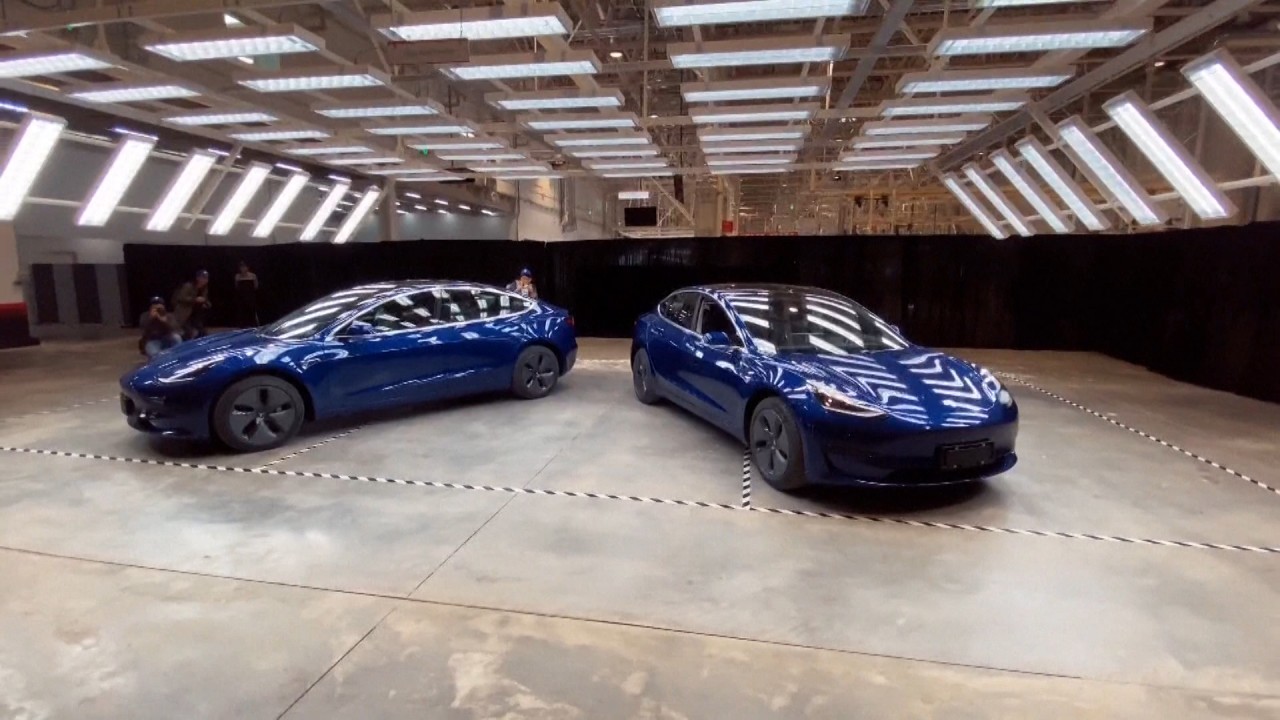
02:06
Coronavirus pandemic creates ‘new Cold War’ as US-China relations sink to lowest point in decades

The past six months in US-China relations have been difficult on many fronts and the Covid-19 crisis, rather than forging a common purpose, has made them worse. Here’s where things stand.
On the US side, President Donald Trump has suggested, without evidence, that the virus escaped from a government lab in Wuhan. This comes as Chinese investment in the US is under greater scrutiny by the Committee on Foreign Investment in the US and the Commerce Department’s review of US technology exports with potential military use has expanded. A new rule that has been proposed would give the department power to unwind deals impacting internet and communications technology supply chains.
Huawei remains a target, with semiconductor manufacturers that use US equipment or software barred from selling to the company without government approval. Other nations are being pressed to enact similar restrictions. Congress is weighing in with sanctions in response to China’s treatment of Uygurs and its imposition of a national security law on Hong Kong.
China, for its part, has reacted aggressively to questions surrounding the origin of the virus, attacking governments that have suggested it be explored. Inside China, scientists researching the subject are now required to submit their work for government review before it can be published.
Attempts like this to control the narrative undermine trust and discourage cooperation. China revoked the press credentials of journalists from mainstream US media like The Wall Street Journal and The New York Times while the US required some Chinese media offices to register as foreign government representatives and reduce their staff. Both moves limit our windows on each other.

02:06
Coronavirus pandemic creates ‘new Cold War’ as US-China relations sink to lowest point in decades
At a broader level, China is asserting its influence across a broad international front, often with a hard edge. The decision of the National People’s Congress to pass a national security law for Hong Kong has increased tensions further.
All this is happening in the middle of the worst economic crisis since the Great Depression. Global crises such as this call for leadership and cooperation. During the global financial crisis 10 years ago, US and Chinese leaders consulted closely. Not so today.
But there’s another narrative. US companies operating in China are for the most part positive about the opportunities the market presents and intend to stay. Tesla’s opening a wholly owned factory in Shanghai has been a big success, with Tesla sales now accounting for one-third of China’s electric vehicle market.

01:20
Tesla starts delivery of made-in-China cars
The successful initial public offering in the United States in June of Agora, a video interaction company with headquarters in Shanghai and Silicon Valley, validates the continuing value of hybrid US-Chinese companies and the interest of public markets.
And US and Chinese companies and their scientists are working together in disciplines spanning tech and life sciences to address Covid-19. So, despite diverging paths at the national level, private and subnational cooperation remains strong.
The other positive news is that the “phase one” trade deal signed in January is working – up to a point. The deal itself is a very modest step that paused the escalation of tariffs. China agreed to increase purchases of US agricultural and manufactured products by US$200 billion over two years, address technology transfer and intellectual property concerns, and open markets to financial services such as insurance, banking, payment services and securities.
The most difficult issues – relating to China’s industrial policies – were left to “phase two” talks and most of the tariffs imposed during the trade war remain in place. With systemic issues unresolved, more conflict lies ahead.

But let’s work with what we have. Key parts of the phase-one agreement are being implemented. Technology transfer concerns were already being addressed through China’s new foreign investment law. An opening in financial services was also under way before the negotiations began, and US companies are stepping into the market.
Intellectual property issues have seen positive movement. Regulatory barriers in agriculture are also being addressed, in areas such as agricultural biotechnology and phytosanitary standards. As always with China, implementation is a concern, but so far the agreement’s key regulatory commitments are being met.
Meeting targets for the purchase of US goods and agriculture is proving more difficult. Most observers believe the targets were unrealistic to begin with, and with Covid-19 slowing China’s economy and with the world’s economy in recession, hitting those marks will be harder.
US exports to China are down almost 10 per cent from one year ago, and since the agreement was signed, manufactured and energy exports have fallen while agricultural exports have barely moved. This contrasts with expectations of high double-digit growth.
The fact that the targets are based on government-directed purchases more than markets raises further questions about the agreement’s sustainability as a longer-term way to grow trade.
What to do? If another downward spiral in relations is to be prevented, the phase-one agreement needs to work. China should be expected to meet its commitments, but on terms that are practical in current conditions. A successful phase one, modified or perhaps reimagined, can demonstrate the ability of both countries to work together. An abrogation by either side would be destabilising.
Decoupling of the two economies is already under way through the actions of both governments, starting with technology and supply chains. The scope of separation, however, should be limited. These are the world’s two largest economies, and a large-scale decoupling is neither desirable nor possible.
To find a new floor, both governments must reach an understanding on areas where interests are likely to diverge, where cooperation should continue, and where possibly both might lead. That process of pragmatic realignment should start with the phase-one agreement, which, despite its limitations, is pivotal at this moment and must be made to work.
Sean Randolph is senior director at the Bay Area Council Economic Institute and a frequent writer on global business and economic issues (www.bayareaeconomy.org)